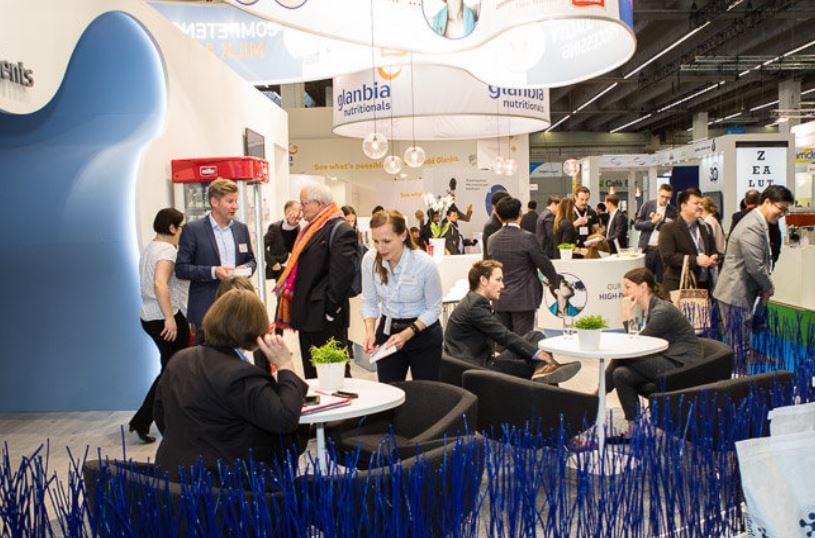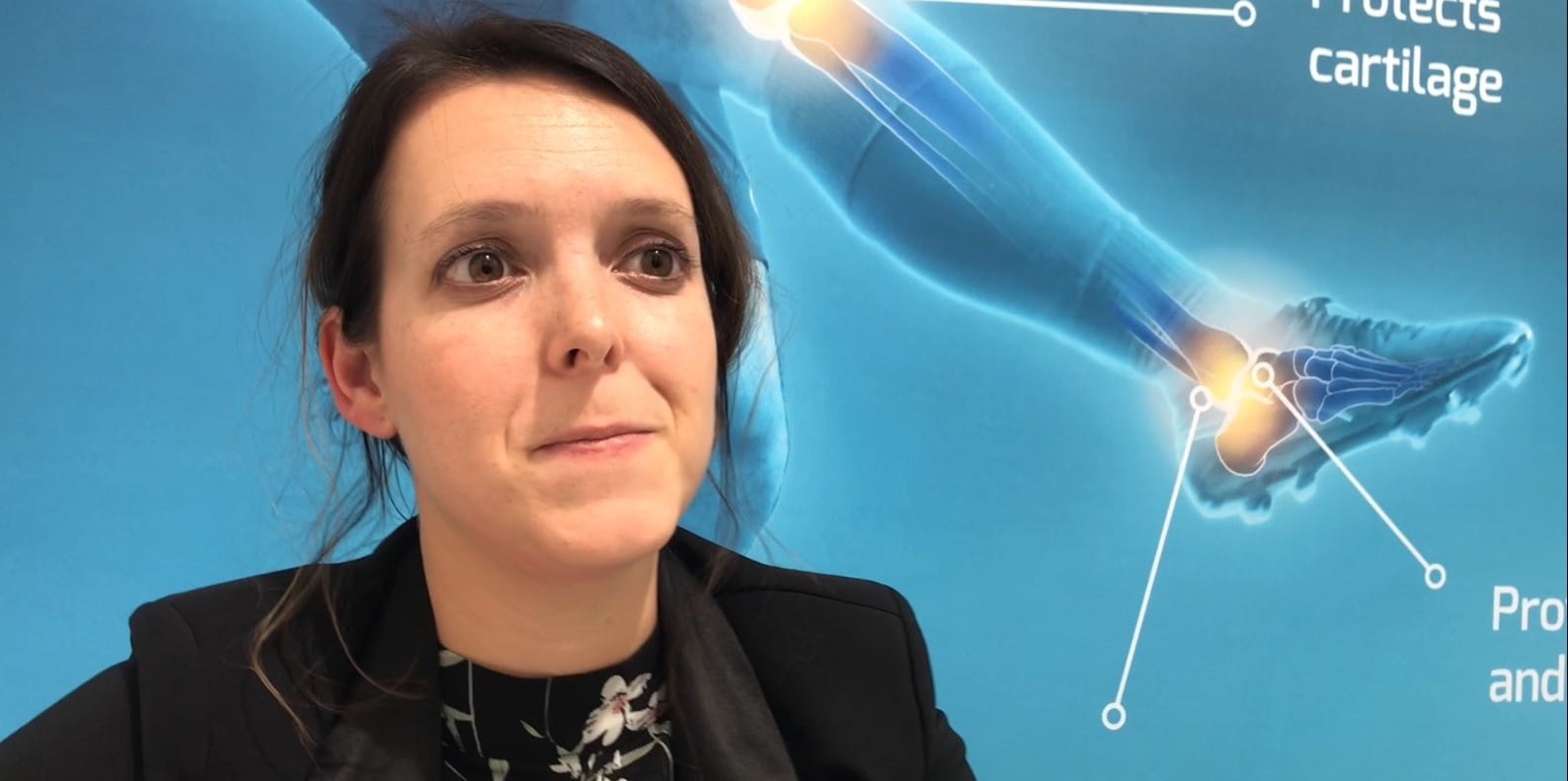Healthy ageing and by association bone and joint health could be one of these areas. While solutions to prop up creaky joints have struggled against headline-grabbing technology like artificial intelligence, exhibitors in Frankfurt are adamant that healthy ageing ingredients are not to be overlooked.
Commenting on the steady but increasing stream of elderly consumers Sentko, Beneo’s vice president regulatory affairs & nutrition communication said, “It is something that starts much earlier, during pregnancy, throughout the life cycle reaching the elderly phase”.
“When it comes to the young or middle-aged people, the desire to be fit is constantly increasing. So in that way it is considered a nice fit,” said Sentko.
“When you’re talking about healthy ageing in the past to consumers in their 20s or 30s, they tended not to bother. Today, there is much more interest to be fit and to make the right choices.”
While Beneo are very much active in the healthy ageing arena, the sector’s parallels with sports nutrition (and to some extent, personalisation) open up the prospect of ‘cross-selling’ in which bone and joint health, healthy hearts and weight management apply to both health-conscious demographics.
Beneo themselves were at HiE proclaiming that the ‘sportification’ of products was moving beyond traditional gels, bars and drinks towards mainstream foods such as ready meals and snacks that come with sports related claims.
A ‘sporty makeover’
According to Beneo’s marketing director Thomas Schmidt, the concepts of sports nutrition was being applied to traditional foods as part of a ‘sporty makeover,’ blurring boundaries in the process.
“The ‘sportification’ of foods aids in these decisions as the choice of ‘sportified’ ingredients could make the food more attractive in expressing its healthy credentials,” added Sentko.
Sentko highlights the ongoing challenges that product developers have in selling the benefits of healthy ageing ingredients, such as bone-boosting Oligofructose-enriched Inulin Orafti Synergy1, communicating an issue that to some consumers is light years away.
It’s a challenge all too familiar in the nutricosmetic industry, where an upsurge of skin-friendly ready-to-drink beverages containing collagen, vitamins or aloe vera has led to firms’ reframing the ageing angle.
“We will then see less use of the word ‘anti-ageing,’” predicted Golan Raz, head of global human health division at Lycored.
“As an industry player and Lycored as a brand, we like to stay away from ‘anti-ageing,’ which in our minds translates as ‘anti-time,’ and hence is impossible to achieve.”
Orafti and TruCal
Glanbia Nutritionals are a firm best placed to comment on industry activities. With ingredient offerings that address skin, sports nutrition, ageing’s effects and joint health, Glanbia’s Dr Dagmar Ortlepp spoke to NutraIngredients about how age-related ingredients are not ready for the pasture just yet.
“I think there is much more knowledge in how to maintain bone health with more defined roles of vitamin D and K2 helping to bring calcium to the right tissues,” she said.
“With regards to the elderly particularly those over the age of 70, functional ingredients are gaining more and more importance. A common problem in this demographic is that they do not eat enough. The ingredients need to be able to keep their bodies in good condition.
With Beneo’s Orafti Synergy1 inulin ingredient and Glanbia’s milk-derived TruCal, both firms believe their respective ingredients can address the insufficient intake and absorption of calcium associated with age.
“As inulin improves calcium absorption or vitamin B, the bioavailablity of the calcium increases,” said Sentko.
“With our data we show that it reaches the bone. With the elderly population and the threat of oseteoporosis in mind, this can be addressed by this type of ingredient combination.”
Collagen for millennials
Perhaps unlike skin health and muscle mass, benefits of age-related ingredients, particularly for joint health are ‘hidden,’ exerting their benefits over the long term that are not immediately obvious.
There is also the argument that consumers, particularly the younger demographic, are looking for something with noticeable and immediate returns.
Not so, according to BioCell Technology’s Douglas Jones, who believes a joint-friendly ingredient like collagen is appealing to a much younger audience, who are keen to adopt a healthier lifestyle at an earlier stage.
“Not only in an ageing population are people looking for solutions, but also in a younger population,” he said.
“Being active throughout one’s life is something that millennials are more aware of. They’re looking for products that are going to enable them to maintain that level of activity that they’re used to.”
Jones is keen to point out that that Biocell’s collagen is unique, with the product described as a hydrolysed chicken sternal cartilage extract.
The three main constituents, collagen type II, chondroitin sulphate, and hyaluronic acid, are reduced to highly-bioavailable, very low molecular weight forms through a hydrolysis process.
“From a consumer perspective, they look at collagen as one ingredient, when in fact there are many different types,” he added.
“Part of our challenge as an ingredient manufacturer is that Biocell is not like any other collagen. It behaves differently, offering an assortment of different benefits.”
Maturing nicely
Reports describing the demise of age-related ingredients have been greatly exaggerated. At least, according to those exhibiting at this year’s HiE.
The shift into sports nutrition and an active lifestyle has been key in boosting the appeal of these ingredients to a younger audience, tapping into that ‘active at any age’ message backed up by numerous studies.
In addition, a move away from an ‘anti-ageing’ stance has also proved successful with product manufacturers playing down aspects of age-related decline and more towards ageing as problem-free as possible.
If the industry is anything to go by, in time, healthy ageing will eventually tap into other areas such as personalisation, sports nutrition and even probiotics, harnessing the insights gained here as a way to counter ageing’s negative effects.
While these ingredients may not have the desirability or cutting-edge appeal of artificial intelligence, healthy-ageing ingredients are in it for the long term, relying on an absence of physical and mental decline as proof of their effectiveness.




